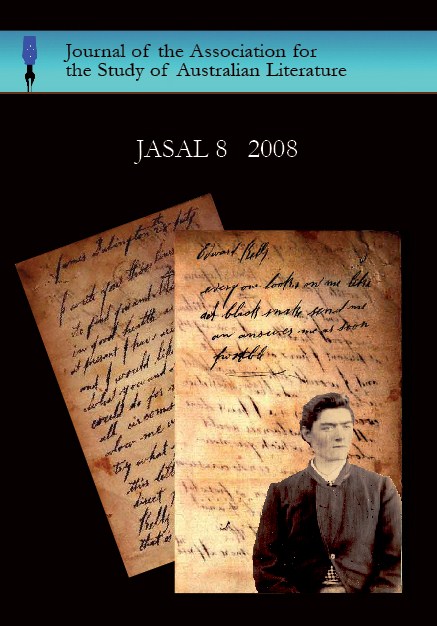Dark Places: True Crime Writing in Australia
Keywords:
true crime, nationalism, genre, Azaria Chamberlain, Evil AngelsAbstract
The international genre of true crime writing has been adapted and reinvented in specific ways in an Australian context, where true crime has a particular cultural resonance in rhetorics of nation. The settlement of Australia as a penal colony, the violent and unresolved history of relations between settler and Indigenous cultures, and our national mythmaking surrounding criminal figures highlight the centrality of true crime and its narration to formations of national identity. True crime is a popular and growing contemporary genre, typically concentrating upon certain events and figures as kinds of cultural flashpoints, and it also has a long history, from colonial narratives to early twentieth-century pulp fiction. Yet it has been critically neglected in almost all its Australian forms. This article begins to explore what constitutes true crime writing in Australia, and the ramifications that examining this genre has for changing constructions of nation, culture and history. It is particularly interested in the way in which the genre exploits a narrative tension between story and discourse to mobilise the power of myth, superstition and affect. This fuels the genre's exploration of cultural anxieties surrounding particular figures and events, and the paper uses the seminal text of Evil Angels to exemplify the narrative strategies at work in the genre and their effect on the terms and certainties of national formations.Downloads
Published
2008-09-03
Issue
Section
Articles
License
The copyright for articles in this journal is retained by the author(s), with first publication rights granted to the journal. By virtue of their appearance in this open access journal, articles are free to use with proper attribution in educational and other non-commercial sectors.Attribution-NonCommercial-ShareAlike 2.1 Australia
This work is licensed under the Creative Commons Attribution-NonCommercial-ShareAlike 2.1 Australia License. To view a copy of this license, visit http://creativecommons.org/licenses/by-nc-sa/2.1/au/ or send a letter to Creative Commons, 543 Howard Street, 5th Floor, San Francisco, California, 94105, USA.
How to Cite
Dark Places: True Crime Writing in Australia. (2008). Journal of the Association for the Study of Australian Literature, 8, 17-30. https://openjournals.library.sydney.edu.au/JASAL/article/view/9731

